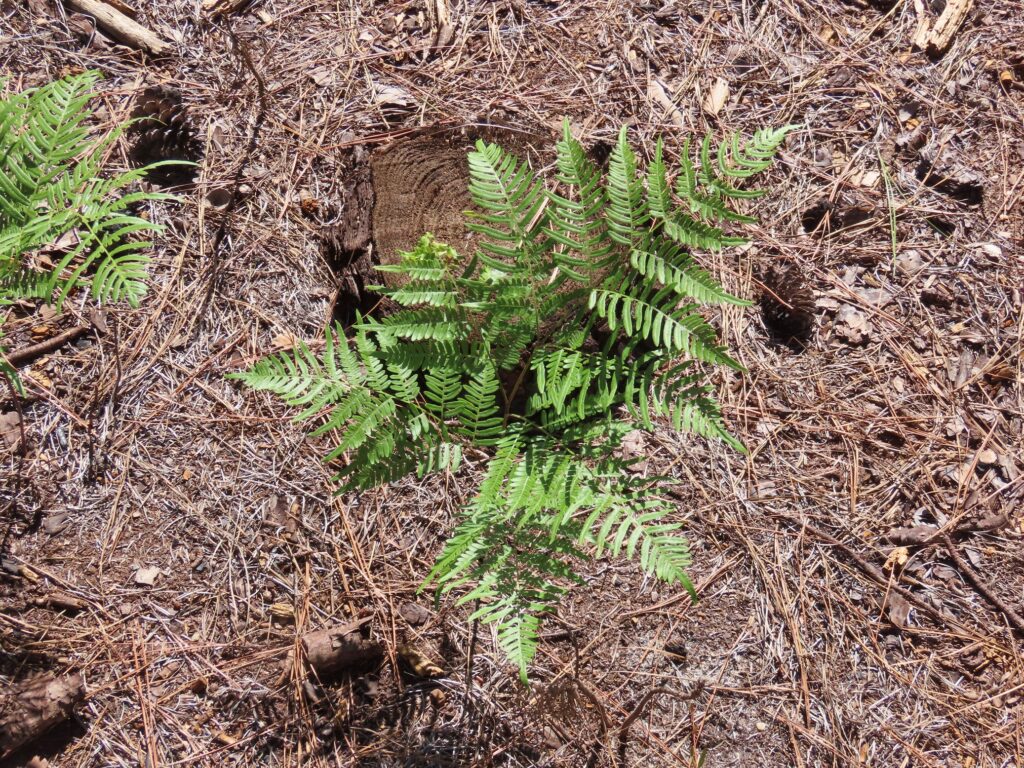



This week for flora and fauna Friday we have a common cosmopolitan colony fern, Bracken (Pteridium aquilinum).
Bracken, also called Eagle Fern, is a widespread fern in the southeast and an extremely successful genus with a worldwide distribution. Its spores are very lightweight and so it has been able to distribute itself globally through wind dispersal. Bracken generally grows in woodlands, beneath the forest canopy. It prefers more acidic soils and is both drought and fire tolerant. Thus it can be found at home practically everywhere in the Southeast. It is a vigorous colonizer and will spread laterally to form huge colonies of densely packed fronds. The fronds of Bracken are large, triangular, and often wider than they are long. They are also generally held upright, with the blade bending at a forty-five degree angle from the stalk. Each frond emerges as a single wiry stalk sent up from the earth and its leaf blade is usually divided into seven leaflets, or pinna to be technical. Each pinna is again divided into a dozen or two pinnules, which themselves each have another dozen or so lobes on them. The key things to look for to identify Bracken are these pinnules and how the lobes of those closer to the tip of the pinna start to merge together, with the terminal pinnules being narrow and un-lobed. This characteristic, along with the broad triangular frond, make Bracken easy to pick out in the southern woodlands.
Another major reason for Bracken’s success is that its foliage contains a chemical called Ptaquiloside, which is toxic to nearly all mammals. This chemical causes hemorrhagic diseases and tumors in cattle, deer, pig, rabbits, rodents, and other mammals. It is also a carcinogen in humans and can cause gastro-intestinal cancer when eaten. This means that, although Bracken can be found nearly everywhere, it is rarely eaten by herbivores and can thus grow in peace, un-browsed.
Here on Edisto Island and across the Lowcountry, Bracken is often used as an indicator species for quickly delineating wetland boundaries. Bracken is one of our few colony forming upland ferns and it grows almost exclusively on upland soils. Because of this and its ubiquitous presence on the landscape, it can serve as a rough boundary of wetlands for ecologists and land managers. Bracken will often grow right up to the edge of a permanent wetland or into the margin of regular ephemeral wetlands, but not into it. Within the wetland can be found many of our other common colony forming ferns, like Chain Ferns (Woodwardia sp.). This creates a sort of no-ferns-land on the boundary which neither the wetland ferns nor Bracken can successfully colonize. On dry years Bracken gain grounds in this boundary but then retreats inland in wet years. Thus it is not a perfect means of delineation but, in the field, it can give a good idea by eye of the area where a wetland’s boundary falls.